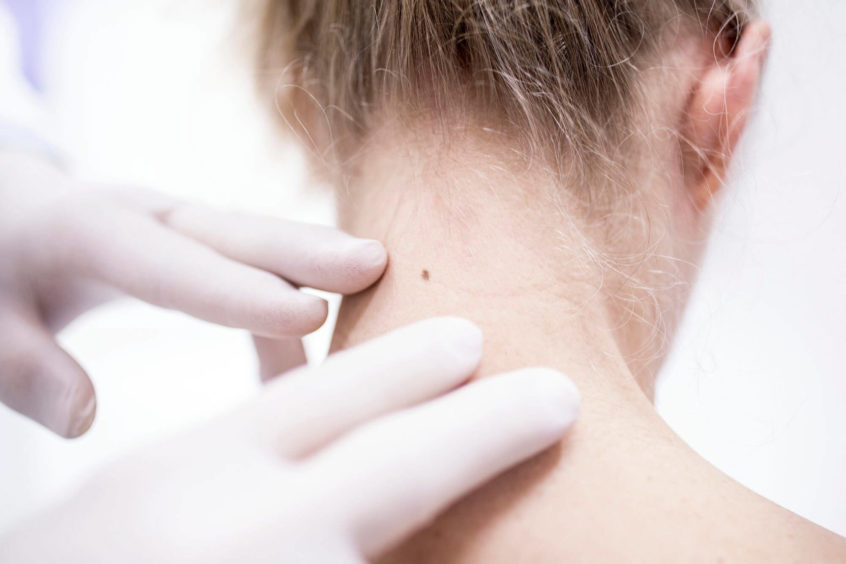“I just thought it was a pimple, but it didn’t go away.” This is hands-down the most common description we hear when our patients describe the appearance of their first skin cancer.
In your mind, perhaps the thought of skin cancer is an ugly black or brown obvious blob on the skin. In reality, however, the vast majority of skin cancers we see are much more subtle. Almost all skin cancers are a result of chronic ultraviolet (UV) exposure from the rays of the sun or an artificial UV source such as a tanning bed. As such, they begin and develop in the thin outermost layer of the skin, known as the epidermis.
Thus, a new skin cancer is detectable by a change to the surface of the skin. In other words, there has to be some visual and palpable clue to its presence. For the most part, skin cancers cannot “brew” under the surface of the skin and then rear their ugly heads. By being more mindful of your own skin and new growths that appear or change to the texture of your skin, you have a much better chance of picking up on suspicious activity as early as possible.
Over 90% of skin cancers fall into the category of “non-melanoma skin cancers”, which include basal cell cancer and squamous cell cancer. These can have a similar presentation on the surface of the skin and often appear as rough or scaly pink to red growths.
Over time, they can develop small broken blood vessels on their surface and may eventually start to bleed with minimal provocation. These largely occur in the sun-exposed areas of the body like the face, scalp, forearms, hands, and shins but can also develop on the back and chest.
We often hear patients say that they thought the skin cancer was from a bug bite, chronic rubbing from glasses, a branch that hit them while gardening, or a scratch from their pet. While all of these things happen to us, the resultant effects on the skin should HEAL in a normal amount of time (1-2 weeks). When you notice what appears to be a scaly or bleeding irritation that is present for a month or more, you should consider having it evaluated by your dermatologist. Nothing should be rough, scaly, or bleeding in the same spot for a prolonged period of time without improvement.
Sometimes early skin cancers can appear to be healed but then reappear in the exact same location. Over time, this will worsen as the skin cancer grows more broadly and deeper, creating damage to the surrounding skin. Don’t convince yourself that this is normal or ignore these tell-tale signs and get to your doctor for an evaluation.

